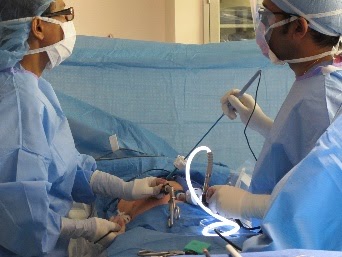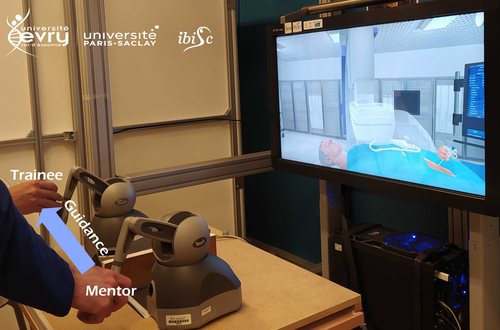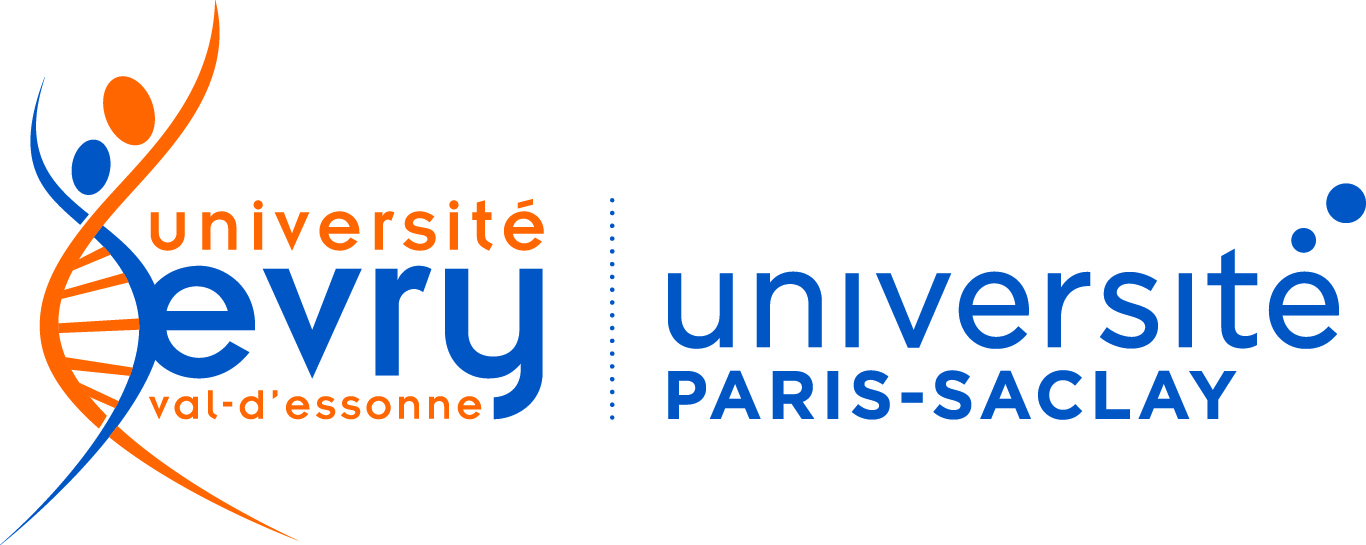- ANR JCJC Show-Me (48 months, 248k€)
Show-Me ANR project
Virtual reality mentee-mentor multimodal collaboration for surgical skills training
Traditionally, medical interns are trained on the basis of the companionship model by training patients during hospital internships supervised by experts. However, for ethical and patient safety reasons, as concluded by the 2012 Haute Autorité de Santé report "never the first time on the patient", the development of new innovative simulation-based medical training programs and techniques is becoming a necessity and an emergency.

In this context, the aim of the Show-me project is to design innovative multimodal and collaborative interaction techniques and user interfaces allowing an expert mentor to demonstrate his skills, supervise, and guide a mentee through a VR training environment for a better transfer of technical medical skills.
The underlying research question to address in this project is to determine the impact of interactive and multimodal collaborative training in VR on the transfer of technical skills in healthcare. Our hypothesis is that multimodal mentee-mentor interactions will improve the technical medical skills transfer and improve the trainee’s learning experience as compared to traditional teaching methods.
State of art
Mentoring-based learning
Instructors guide and support the medical student during practice with real patients. While this is a well-established model for teaching technical medical skills, it is a risky learning technique with safety and ethical issues.


Simulator based-learning
VR is effective for training medical skills. Most current VR medical trainers focus on an individual training of technical skills, such as instruments handling or tissue dissection. However, mentoring-based learning is not well supported by current VR systems.
Collaborative virtual environments
Collaborative virtual environments (CVE) allow multiple remote users to work together in a shared virtual space. The communication in CVE is different from face to face communication and this may be problematic for an effective learning. For instance, body movements, touch, facial expressions, and gaze direction are hard to reproduce faithfully in CVE.



